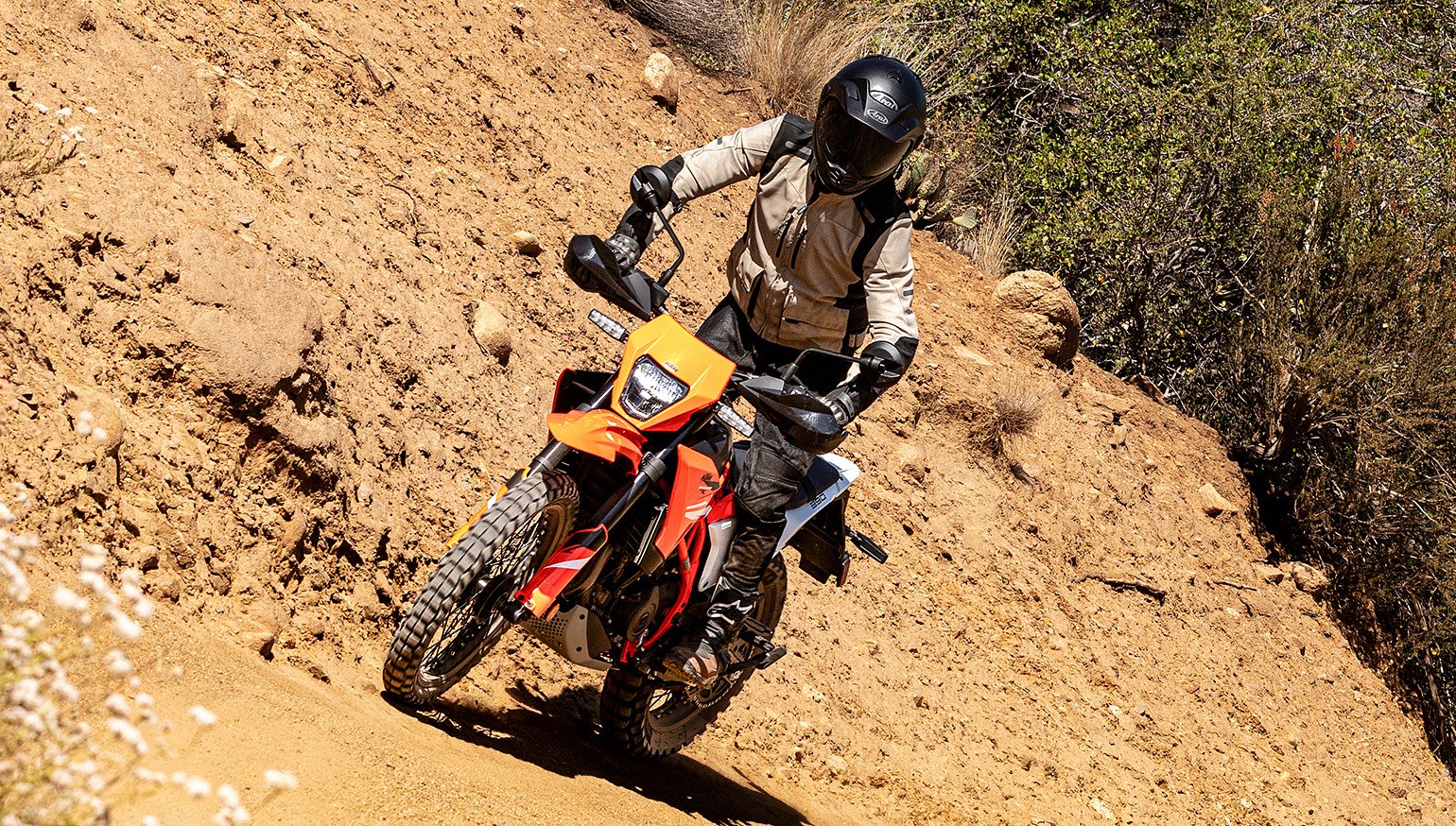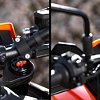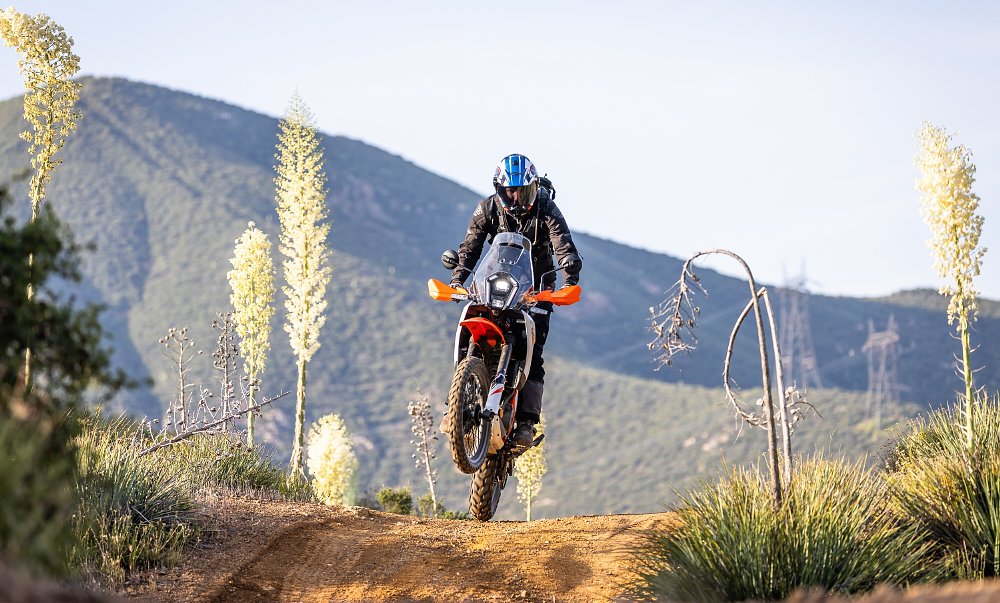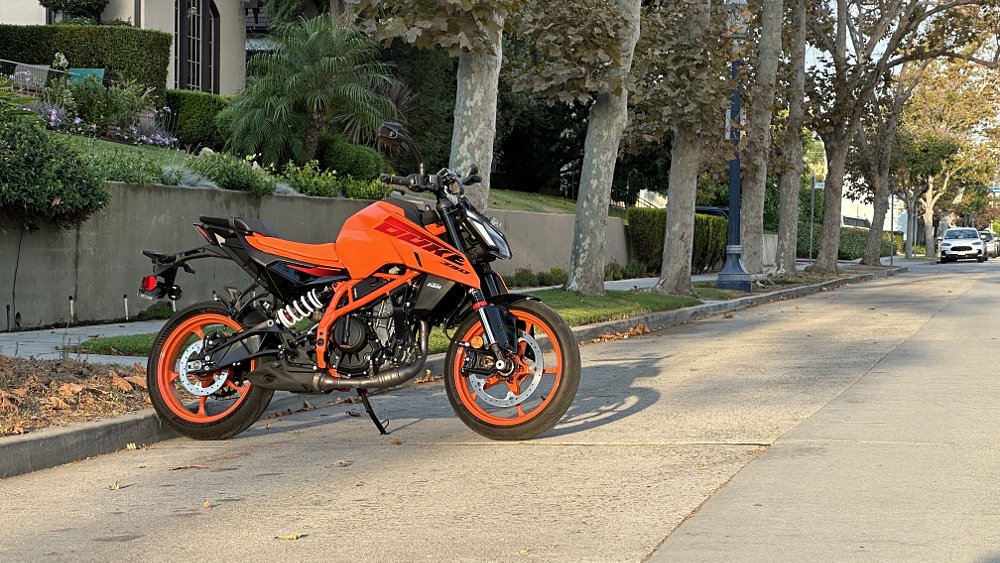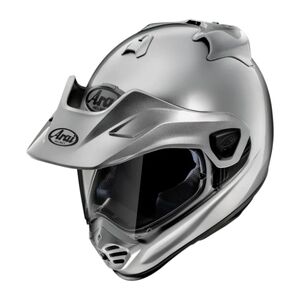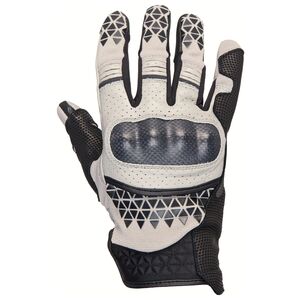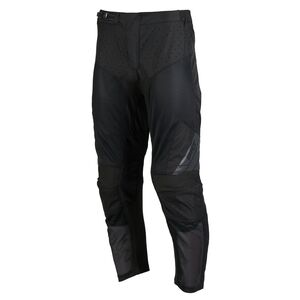The 390 Enduro R is a misnomer.
The word “enduro” evokes images of boulder jumping, of roost flinging, of steep, treacherous hill climbs. It recalls epic feats of bike control and balance. The “R” suffix is held in a similar regard, often reserved for up-spec, race-oriented motorcycles. The 390 Enduro R is neither— even if KTM advertises it as such.
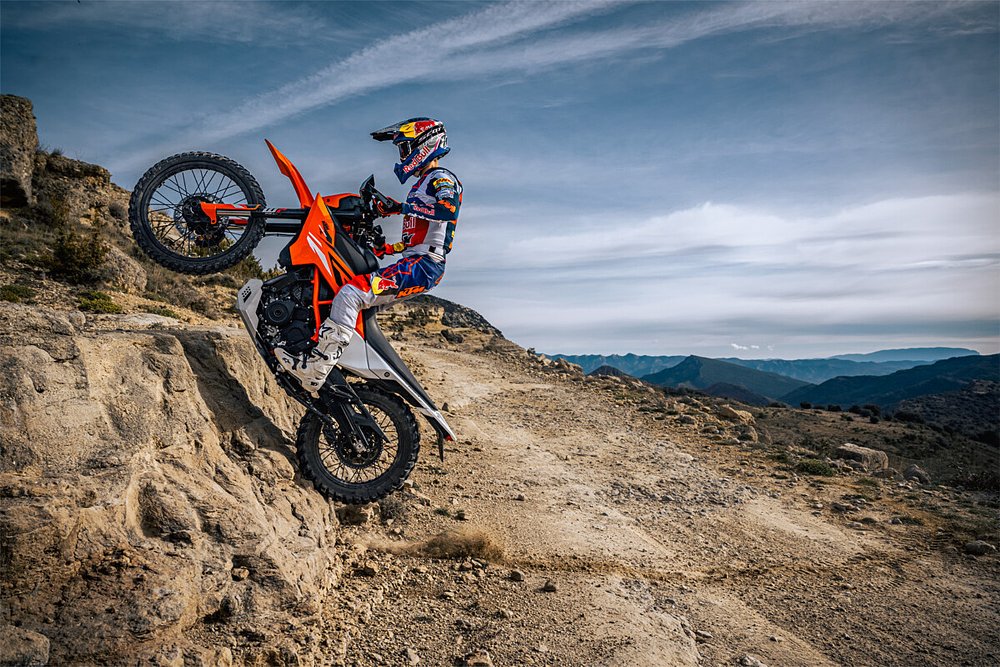
The Enduro R can scale rock faces. It can kick up dust. It can even take flight. That’s what its marketing stills demonstrate, anyway. What those photos fail to acknowledge is that 2024 FIM EnduroGP World Champion Josep García is at the helm of the pictured 390. It’s a detail often overlooked by the target audience. That’s the crux of the matter: Customers interested in the Enduro R aren’t looking for an enduro bike.
KTM may promote the model’s dirt-friendliness, but its greatest asset is its user-friendliness. It’s pitched as “Ready to Race” when it’s really “Ready to Trundle.” An enduro, it is not. But what the bike lacks in outright performance, it gains in all-around practicality. Much of that comes down to its 390 roots.
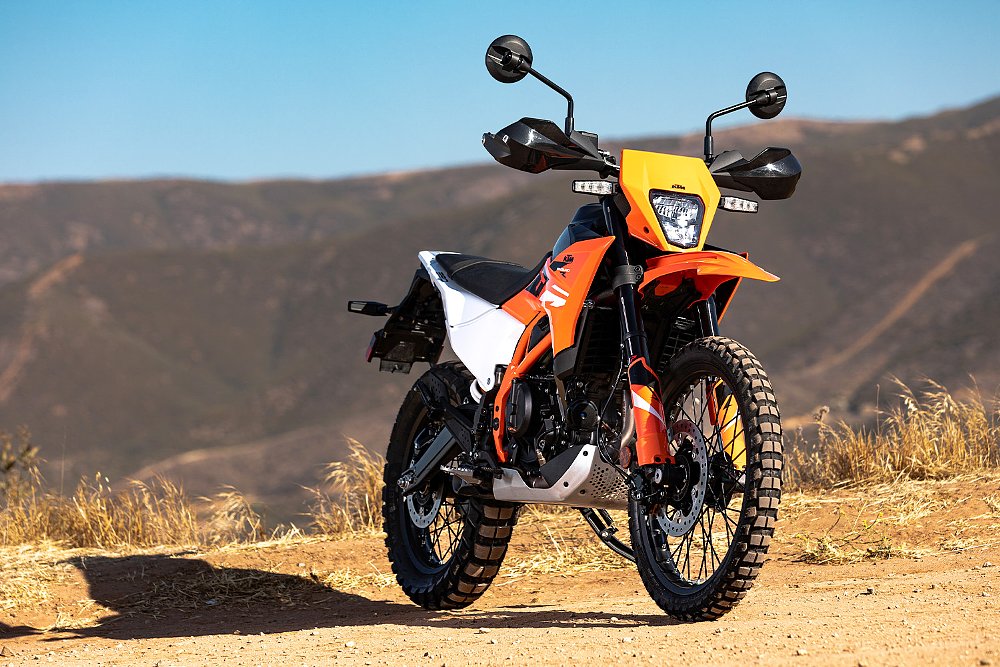
Streetwise
The 390 Duke is the elder statesman of KTM’s 390 line. Introduced in 2013, the entry-level naked bike entered its third generation in 2024. It underwent a full rebuild in the process, and its LC4c engine was a major focal point. Thanks to four millimeters of additional stroke (from 60 mm to 64 mm), the 373 cc single grew to 399 cc. The mill’s 89 mm bore remained unchanged, as did its claimed output of 44.3 horsepower (at 8,500 rpm). Only peak torque crept upward, from 27.2 foot-pounds to 28.8 foot-pounds (at 7,000 rpm).
From that perspective, the thumper’s updates are much ado about nothing (to the end user, at least). That’s only half of the story, though. The revised single also earned new fuel injectors for enhanced efficiency and a reworked cylinder head for improved thermal management. The result is an LC4c with longer maintenance intervals. Past generations required regular services every 4,650 miles and valve checks every 9,320 miles. The current-gen LC4c extends those periods to 6,200 miles and 12,400 miles, respectively.
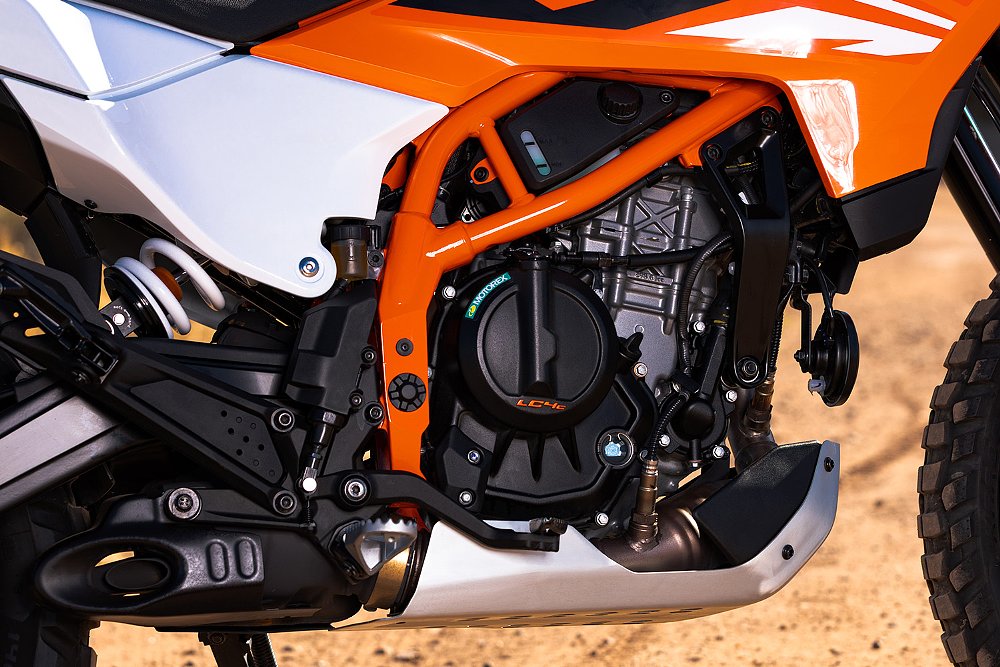
The same powerplant is now at home in the 390 Enduro R — albeit, with key refinements. A newly developed airbox now allows the engine to sit higher in the frame, maximizing the model’s ground clearance. The exhaust’s double catalyzer also eliminates the need for an end muffler, netting nearly five pounds of weight savings. Minor changes may mark the Enduro R’s engine, but other areas required a heavier hand. Chiefly, the chassis.
Like the 390 Duke, the Enduro R features a tubular steel frame, but Team Orange engineered the unit for off-road escapades. That required a rigidity profile all its own. Not to mention, a different steering head angle and triple clamps with 25 mm bar risers. The bolt-on subframe and extended swingarm aren’t exempt, either, as KTM fashioned both for the Enduro R’s dirt-focused pursuits.
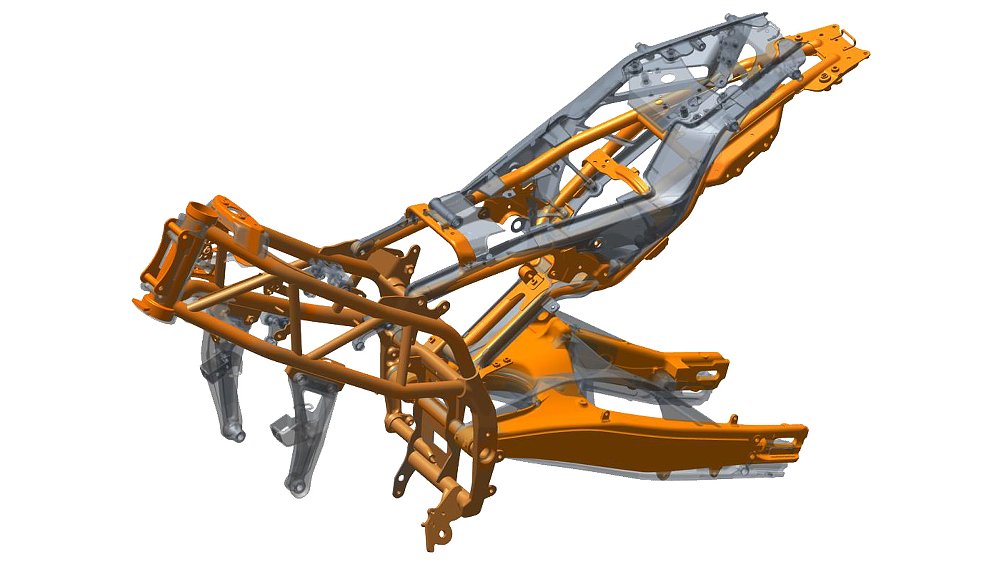
Suspending that trail-ready package is a WP Apex fork and monoshock. The former is compression and rebound adjustable. The latter offers preload and rebound adjustability. Both yield nine inches of travel. Toss in a 21-inch front wheel and an 18-inch rear, and the 390 Enduro enjoys 10.7 inches of ground clearance. It’s clear, the Enduro R’s hardware matches its objectives. So does its software.

Ride modes, traction control, and TFT screens aren’t often found on small-capacity dual-sports. The Enduro R bucks that trend with its two ride modes (Street and Off-Road), multi-level traction control (Street, Off-Road, and disabled), and 4.2-inch mini-TFT. The dual-circuit Bosch ABS is always active in Street mode, while Off-Road ABS is a valuable option for the unpaved path. It’s an impressive package, especially for the small-bore dual-sport category.
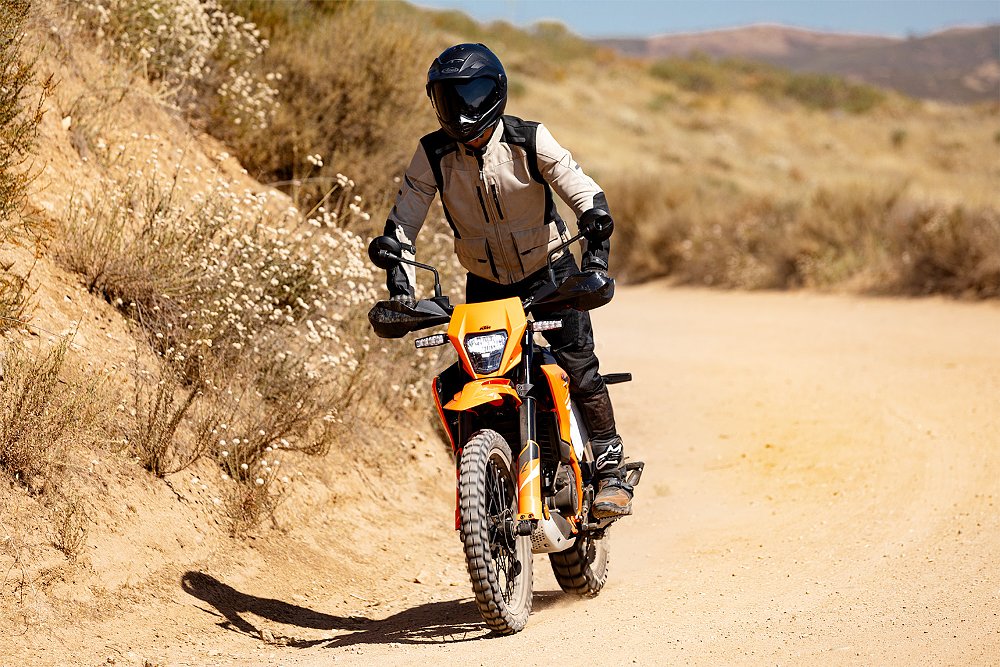
Travel and trail
KTM may outfit the 390 Enduro for off-road exploration, but you still have to get to the trailhead first. That can be a daunting task for someone in my position. I live in the heart of Los Angeles, which means the closest OHV area is over 40 miles away. Most of that journey is spent on interstate freeways, too. Not ideal for a model of the Enduro R’s stature and accommodations. Just look at its dirt bike-style seat. I’d call attention to its wind protection, but there’s none to speak of. The same goes for cruise control. Needless to say, I was dreading the ride between my front gate and the gravel.
To my surprise, the little dual-sport held its own on the Superslab. Sure, I attempted to shift into seventh gear a few times. Sure, vibes rattled through the mirrors at 5,000 rpm, the handlebar at 6,000 rpm, and the footpegs anywhere above 8,000 rpm. That’s to be expected from a 400 cc motorcycle, but the 390 exceeded expectations in other ways, too.
The seat, for instance, is surprisingly tolerable. I wouldn’t characterize it as comfortable, but it's more welcoming to the tush than it is to the eye. To put a finer point on it, I only experienced discomfort after nearly 60 minutes in the saddle. That would be a capital offense on a touring motorcycle but it’s entirely passable for a machine of the Enduro R’s ilk. The non-existent wind protection was also a pleasant surprise. Yes, I endured all gusts head on, but with the wind force evenly distributed across my upper body, buffeting was hardly a factor. Golf claps all around.
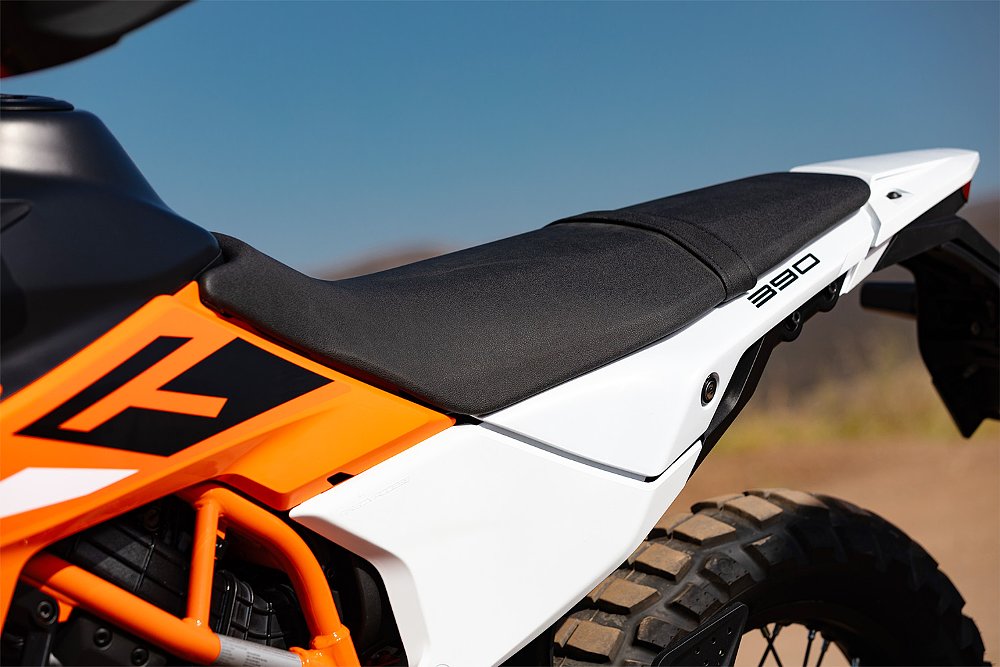
Even the engine proved its mettle on the interstate. In part, that’s because the LC4c excels in the middle and upper rev range. It maintains 75 mph with ease, even if its 399 cc single spins at nearly 7,000 rpm (in top gear) to do so. There’s a good reason for that. After all, KTM developed the one-cylinder wonder for life on the streets. That lineage was most evident when lugging it through the dirt.
When I first learned the 390 Enduro R comes with ride modes, I thought, “Why?” After living with the bike for three weeks, I’m grateful for those provisions. It’s not because I’m a big proponent of choice. It’s not because each ride mode is configurable. It’s because Off-Road mode outperforms Street mode in nearly every scenario. Of course, I defaulted to Off-Road when the rubber met gravel, but I often left it on after returning to the pavement, as well. I mostly attribute that to the mode’s low-end response.
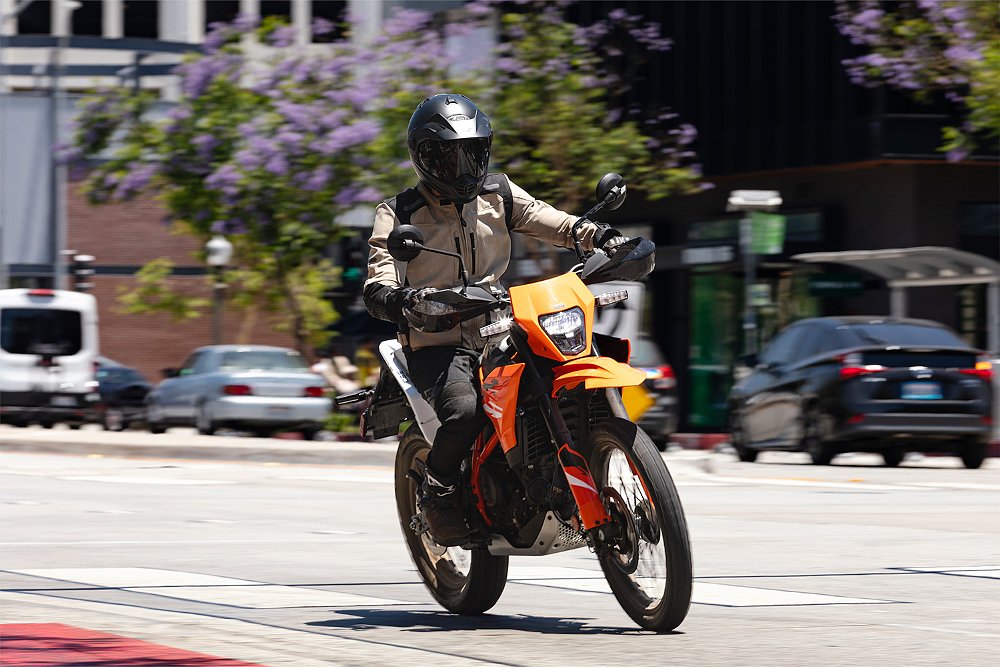
As previously mentioned, the LC4c comes into its own in the mid- and upper-range. That may suit small-capacity street bikes, but it’s less than ideal on the trail, where easily accessible torque is a precious commodity. Off-Road mode benefits from better throttle response, but it doesn’t negate the problem entirely. The 390’s single is best when revved. If you’re in search of oomph, you won’t find much under 4,500 rpm. It’s nothing that well-timed downshifts and dexterous clutch slipping can’t address, but that also leaves newer riders managing the thumper’s quirks and the off-road obstacles all at once.
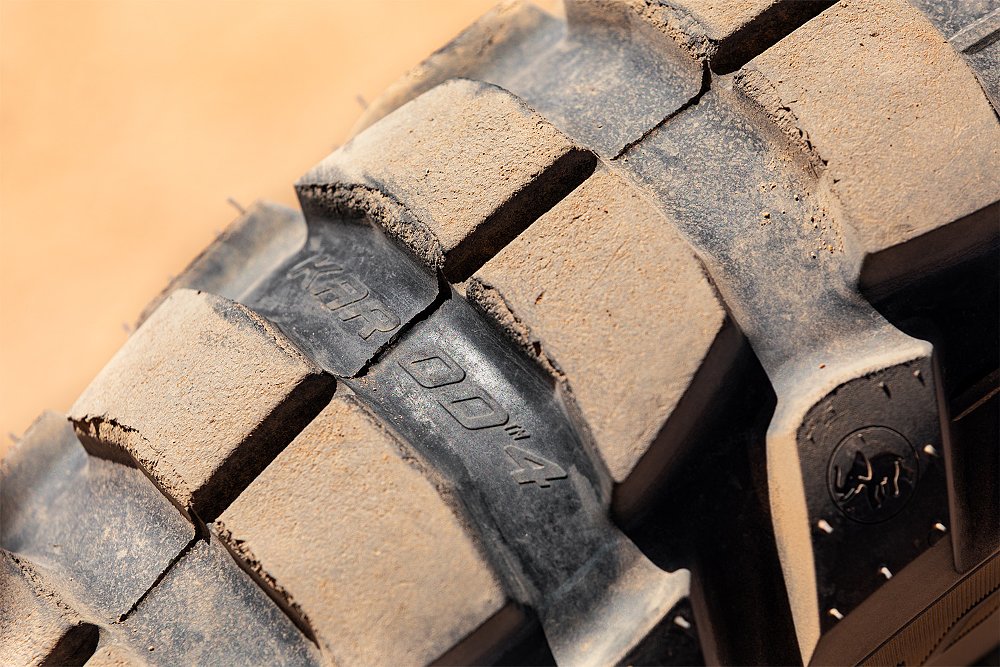
The engine might be out of its element on the trail, but the Enduro R’s chassis is right at home. Its Metzeler Karoo 4 tires make light work of everything from hardpack to deep sand to rock gardens. The Apex suspension matches that energy, equal parts supportive and forgiving. The only time I bottomed the rear shock occurred after launching the 390 higher than I could skillfully land. While the resulting noise left my heart in my throat, the monoshock took the licking and kept on ticking. Good on ya, mate.
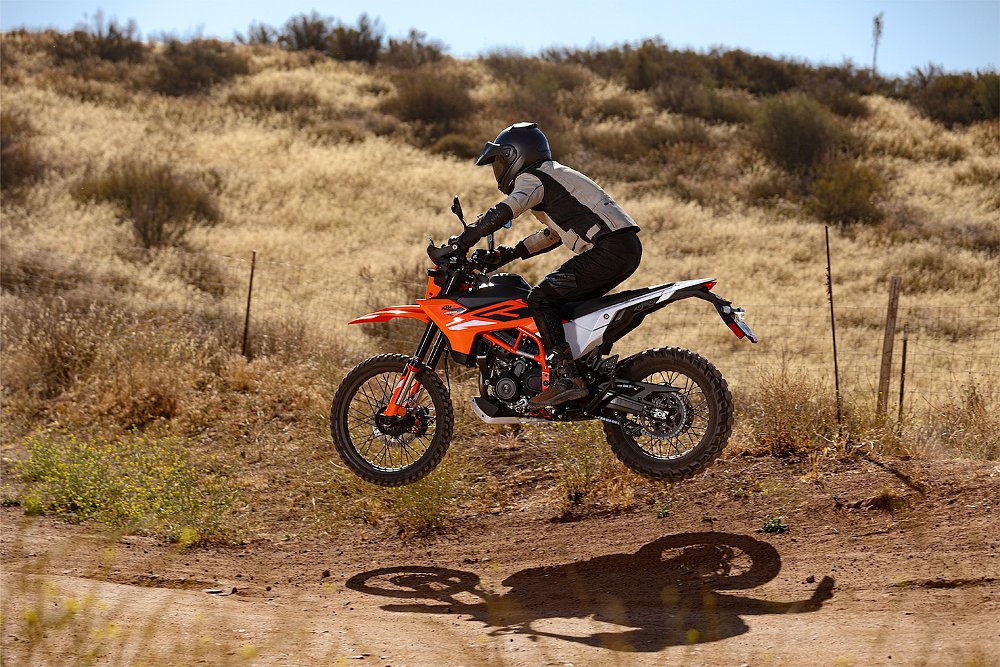
The chassis is composed and communicative. It’s both capable and comfortable. The only nit I can pick is with its brakes. I tend to rely on the front brake to scrub off the majority of the bike’s speed, both on- and off-road. The Enduro simply required more braking force than anticipated. The 285 mm front disc tops my list of suspects but the squishy brake lever contributed, as well. While a simple pad swap could remedy the situation, off-road newbies may prefer the softer bite of the stock pads. Therein lies one of the 390 Enduro R’s greatest strengths: Riders can grow with it.
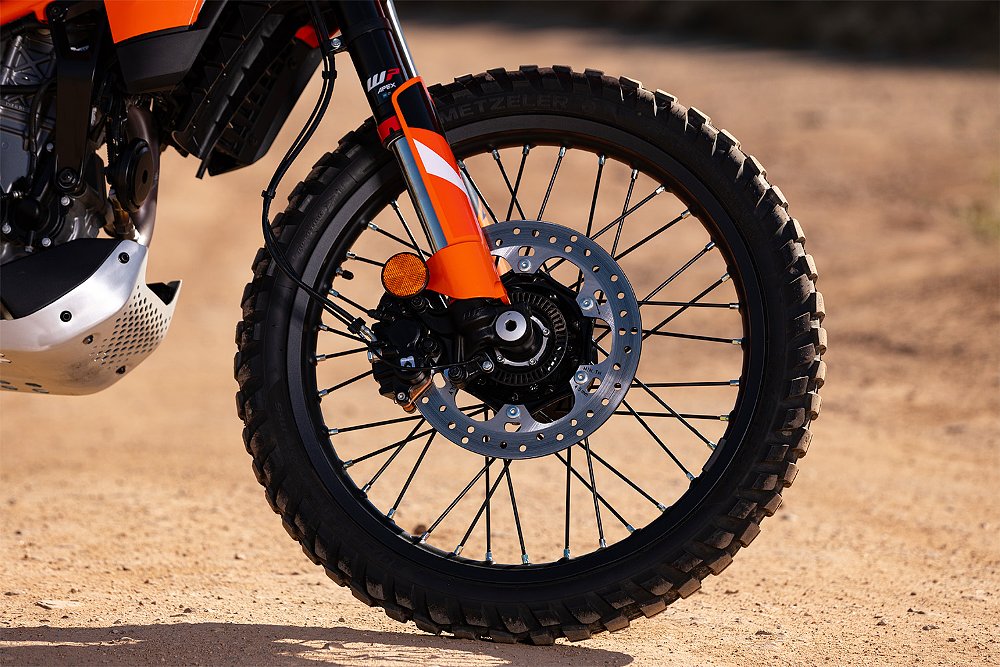
I tend to carry a lukewarm pace off-road. The last thing I want to do is ride over my head. That’s the fastest way to ride over a cliff. No, thank you. That’s why I embraced the Enduro R’s rider aids. Many motorcyclists will contend that 400 cc dual-sports have no business offering traction control. I tend to agree with them. That doesn’t mean the rider aids bear no value, though.
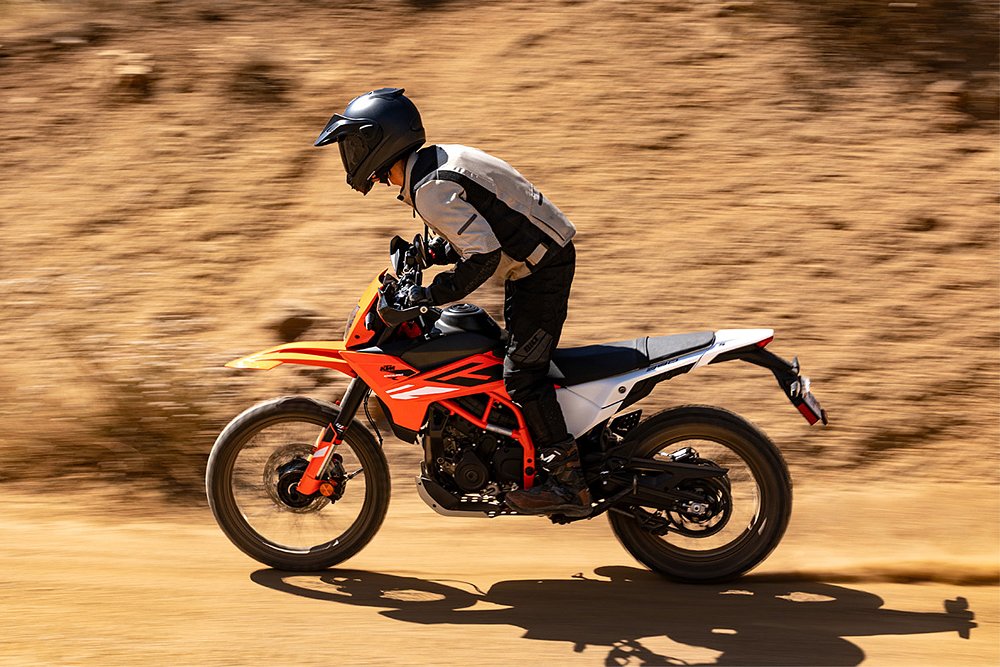
Whether traction control was enabled or disabled, rear slides were always slight enough to save. Still, the 390’s Off-Road TC provides a safety net for beginners, even if that safety net is more of a placebo. Such features free the rider’s mind from obsessing over rear-wheel grip. That, in turn, allows them to focus on fundamentals like line choice and keeping one’s eyes further up the trail. At least, that was my experience. I believe the average 390 Enduro R owner would share those sentiments. Well, as long as that customer can look past the model’s remaining warts, that is.
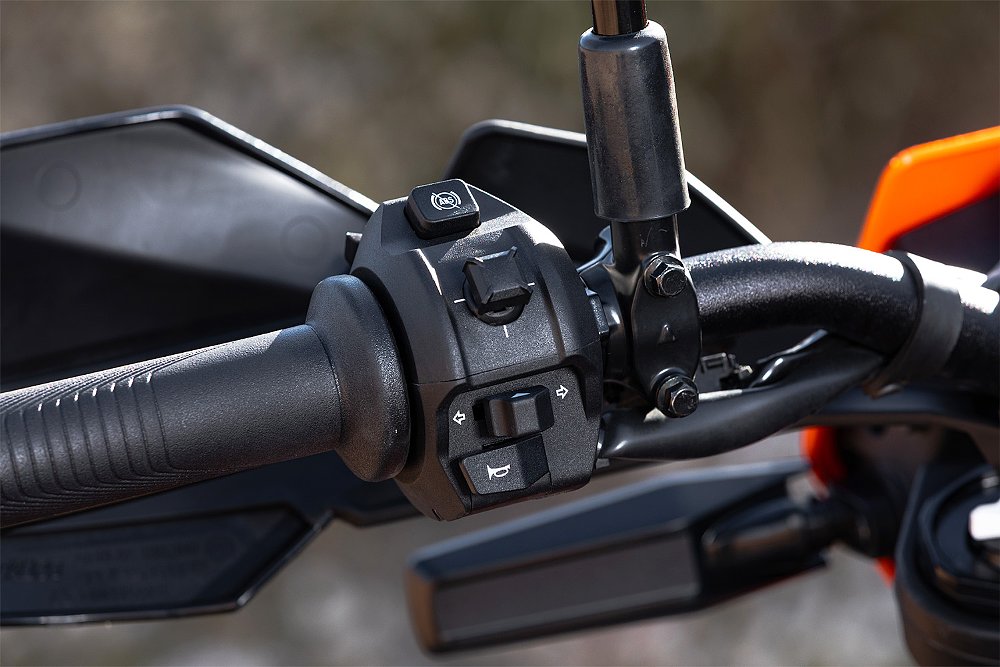
Beta testing
The current-gen LC4c is far from perfect. Its fueling problems are well-documented. I noted its tendency to stall in my 2024 Svartpilen/Vitpilen 401 review, and Zack echoed that observation when assessing the 2024 390 Duke. Yet, KTM addressed none of the issues before Z-Money tested the all-new 390 Adventure R. The same goes for me and the 390 Enduro R.
KTM’s little dualie regularly stalled while under my charge. Each time, the clutch was fully engaged. I didn’t experience stalling under deceleration, like Zack did with the Adventure R, but KTM is still searching for suitable solutions. During the loan period, I learned that the brand attributes the LC4c’s stalling woes to its quickshifter. A KTM rep informed me of a new quickshifter map that reportedly cures the engine's asthmatic symptoms. It’s scheduled to roll out as the first 390 Enduro R units arrive at dealers. That’s just one of several rolling updates coming to the model.
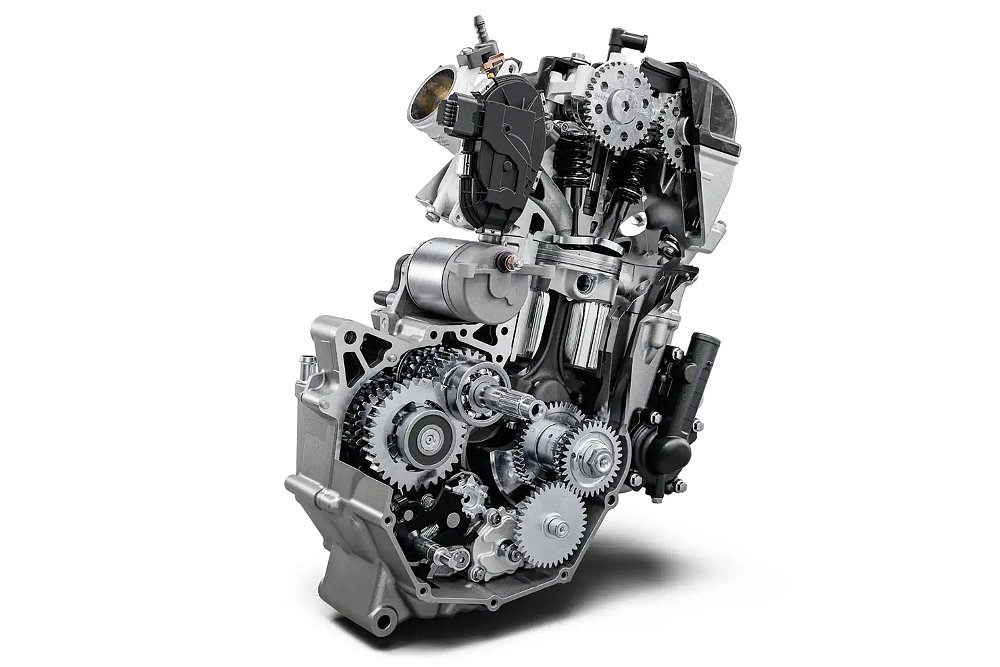
Zack also touched on the 390 Adventure R’s kickstand/kill switch issues in his recent review. That problem persists with the Enduro R. In a nutshell, some users inadvertently press down on the kickstand with their left heel when standing on the footpegs. That partial deployment can trigger the kickstand sensor, and in turn, cut the engine. Devising a kickstand that tucks under the swingarm seems like the long-term solution here, but the Austrian marque is turning to a temporary fix for the time being.
Many KTM dirt bikes come equipped with a rubber restraining strap for the kickstand. It’s a low-tech component, but it’s effective, nonetheless. The same rubber loop could address the 390 Enduro R’s obtrusive kickstand mounting. That explains why KTM is currently beta testing the borrowed part on its new dual-sport, with hopes of introducing a permanent fix in the coming months. It’s this patchwork approach that makes a product feel like it was rushed to market. That’s rarely a good thing, especially when you face the competition the 390 Enduro R does.
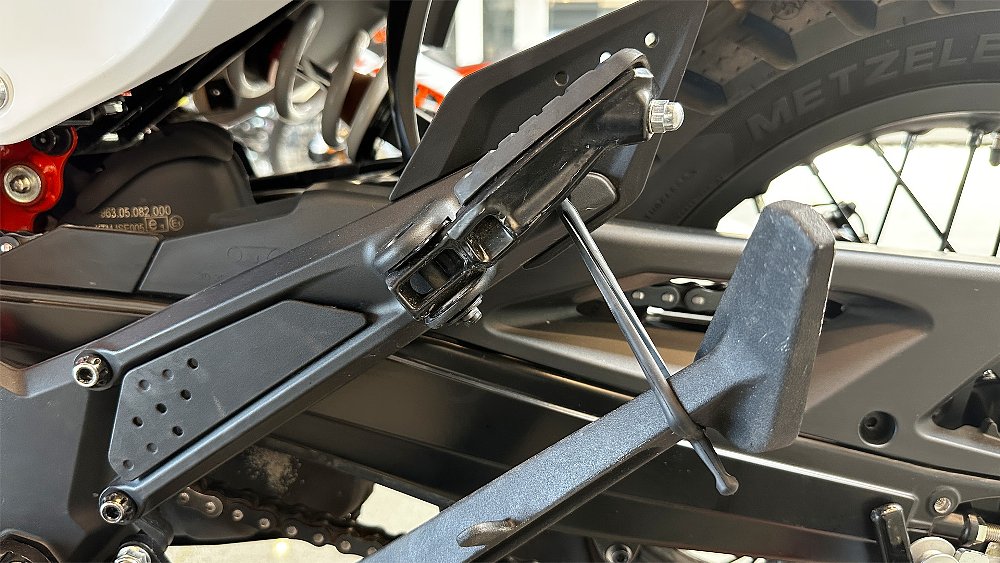
Crashing the party
The lightweight dual-sport market belongs to the Japanese. If the Honda CRF300L and Kawasaki KLX300 are too beginner-friendly for your liking, the Suzuki DR-Z4S is a reasonable (albeit expensive) alternative. The 390 Enduro R not only disrupts that dynamic, it turns it on its head. Starting at $5,499, the KTM is the most affordable option in the class. It produces the most horsepower and features the most rider aids. All of which favorably position the model in the category. Yet, the 390 Enduro R still faces challenges — challenges that are largely self-imposed.
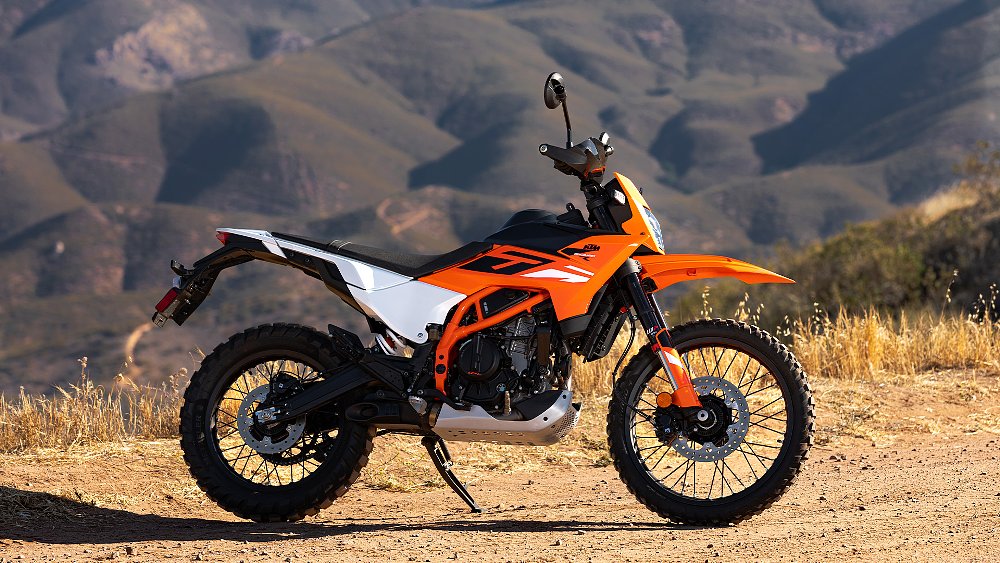
The Enduro R isn’t an enduro bike. We’ve already established that. Given the model’s preparations and purposes, that’s a good thing. KTM’s range needed a cost-conscious yet capable dual-sport with mass appeal. The 390 Enduro R fits that role. However, it still hasn’t reached its final form.
Sometimes, it’s not about the idea, it’s about the execution. That’s the case with the Enduro R. As evidenced by its fueling troubles and faulty kickstand design, the orange-clad dual-sport is a work in progress. The 390 Enduro R’s name may be misleading, but that isn't its biggest hurdle ahead. The model’s success is greatly dependent on KTM’s ability to address its inherited issues.
| 2025 KTM 390 Enduro R | |
|---|---|
| Price |
$5,774 (as tested) $5,499 (MSRP) |
| Engine | 399 cc, liquid-cooled, four-valve, single |
|
Transmission, final drive |
Six-speed, chain |
| Claimed horsepower | 44.3 @ 8,500 rpm |
| Claimed torque | 28.8 foot-pounds @ 7,000 rpm |
| Frame | Tubular steel |
| Front suspension | WP Apex 43 mm fork, adjustable for compression and rebound damping; 9.0 inches of travel |
| Rear suspension | WP Apex shock, adjustable for spring preload and rebound damping; 9.0 inches of travel |
| Front brake | ByBre two-piston caliper, 285 mm disc with ABS |
| Rear brake | ByBre single-piston caliper, 240 mm disc with ABS |
| Rake, trail | 27.1 degrees |
| Wheelbase | 58.1 inches |
| Seat height | 35.0 inches |
| Fuel capacity | 2.4 gallons |
| Tires | Metzeler Karoo 4, 90/90-R21 front, 140/80-R18 rear |
| Measured weight | 365 pounds |
| Available | Now |
| Warranty | 24 months |
| More info | ktm.com |




